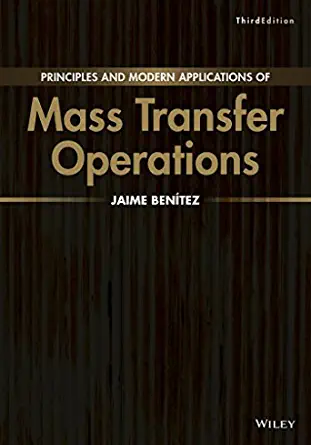Answered step by step
Verified Expert Solution
Question
1 Approved Answer
The mass and energy balances for the outlet temperature ( T in K ) and concentration of reactant A ( C A in moles ?
The mass and energy balances for the outlet temperature in and concentration of reactant in moles from an adiabatic perfectly insulated continuously stirred tank reactor CSTR are as follows:
exp
exp
where feed concentration of molemole, ole of and Put all results from A into a worksheet labeled problem in Excel, save the pol file as yourlastnameproblemapol, and put the results from problems B and C into a worksheet labeled problemsBandC All of the Excel worksheets should go into the same file as the rest of the exam. Define as much as you can using the Insert Name Create function, as you will eventually find how the results for and I vary with flowrate If done properly, for the base case, you should get moles and If the rate constant, is varied from to one will go from essentially no reaction and are the same as and to the point where the temperature starts accelerating out of control.
A pts Solve this problem in Polymath for the base case. A start is in the accompanying Polymath file. You will need both and
B pts Solve this problem in Excel using Newton's method. When you solve this, copy and paste all the way down to row the maximum number of rows. Use the result from a for your data table in part C Your answers are in a and d Notice the VERY slow temperature convergence. In fact, the temperature has not totally converged by the final row. If you do this correctly, you will notice your answers for A and being very slightly different because Excel is limited in the number of iterations more than Polymath is This is a double iterative Newton's method, so the concentration of A will depend on and vice versa. I have started your spreadsheet with initial guesses of temperature and concentration equal to the starting conditions.
C Vary ko from to using the data table in the Excel file that accompanies and vary with using a Data Table function. What happens to the data table values in the concentration of A column column when gets above What does this mean?

Step by Step Solution
There are 3 Steps involved in it
Step: 1

Get Instant Access to Expert-Tailored Solutions
See step-by-step solutions with expert insights and AI powered tools for academic success
Step: 2

Step: 3

Ace Your Homework with AI
Get the answers you need in no time with our AI-driven, step-by-step assistance
Get Started


